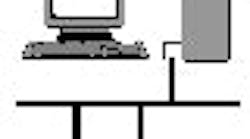I have been an advocate of Foundation fieldbus since installing it and starting it up on a new chemical plant in 1999-2000. Our goal was to be “like the background music in a movie”—if it’s good, you hardly notice it’s there. We succeeded with ITK-3 devices and a host that still had a few annoying bugs (like H1 interface cards that used an OEM PCMCIA card).
Now seven years later, devices and hosts are significantly improved. Over 700,000 fieldbus devices are installed on more than 10,000 systems. According to the fieldbus.org website, 9 of 10 oil and gas majors, 24 of 25 pharma majors and 23 of the 25 largest chemical manufacturers have successfully installed fieldbus projects. Therefore, I’m often a little astonished when an engineer for a major “greenfield” project asks, “Should I install HART or fieldbus?”
I am a HART user—it’s practically inevitable if you have any SIL-rated safety instrumented systems (SIS) in your plant, since Foundation fieldbus has only concept approval for safety applications. Few, if any, of the leading SIS logic-solver manufacturers have a commercial offering with any sort of fieldbus interface. A few instruments still lack fieldbus capability (ultrasonic flowmeters come to mind), so even a fieldbus “true believer” like me has to install a non-fieldbus instrument from time to time.
HART instruments are excellent devices—which is the first reason I’d advise against installing them: They will work so well, your career may be over before you can justify the cost to replace them with fieldbus.
We saw this in the early 90s when we did a major systems and field instrument upgrade in a BP refinery. Once the old force-balance electronic transmitters were replaced with digitally integrated “DE” transmitters, there was a noticeable decrease in instrument work orders, and our decimated instrument department (less than half the people we had in the 80s) still seemed to have time for panel discussions and crossword puzzles. This 1990-vintage strategy works so well, the same refinery brought the rest of the plant “up” to this level only a couple years ago.
Does this sound anything like the space shuttle to you? The inertia of the “installed base” over time, stifles the drive toward innovation.
Like the space shuttle, safety and process availability are the overwhelming deliverables demanded by our clients. You can achieve this with 1980s technology, but once you do, you may be stuck there.
Maybe our “bicameral” controls departments—with people who do exclusively “systems,” and people who do exclusively “instruments and field wiring”—add to the inertia of the installed base. Adopting fieldbus requires leadership in both departments, and if either department is highly invested in the old paradigm, the way forward may be rocky at best.
The once-slow pace of support by major systems vendors also has been a factor. Just three years ago, you could count on one hand the number of systems with proven fieldbus installations. There was an excellent chance that none of the contenders were compatible with your installed base. Today, the HIST test lists 17 host systems from 10 suppliers, but the market is still catching up.
What the advocates of legacy systems and methods may miss is that native host support of HART is a relatively new phenomenon as well; the HART website only lists about five systems suppliers, with a larger number of aftermarket and multiplexer manufacturers.
Are there any compliance tests for HART host I/O? When you specify HART I/O, are there any single points of failure (like a single modem servicing 8 or 16 I/O)? Are there any performance standards? For example, do you know how long the HART polling process will take after you load it up with 1,000 or 5,000 devices?
If you are solely focused on asset management, you might be able to convince yourself that fieldbus diagnostics offer little that can’t somehow be achieved with HART. But the key deliverable of fieldbus is process availability, of which asset management is only a part. The distinctive integration of device, function block and process diagnostics with control schemes and the DCS system will remain a feature that HART can at best approximate.
| About the Author |




